Efficient DNA Sampling in Burglary Investigations
Abstract
:1. Introduction
2. Materials and Methods
2.1. Sampling
2.2. Analysis
2.3. Criteria for a Submission to Swiss CODIS Database
3. Results
3.1. Samples Obtained
3.2. Sample Categories
3.3. Typing Success
3.4. Comparison with Reference Samples
4. Discussion
5. Conclusions
Author Contributions
Funding
Institutional Review Board Statement
Informed Consent Statement
Data Availability Statement
Acknowledgments
Conflicts of Interest
References
- Polizeiliche Kriminalstatistik (PKS). Jahresbericht 2020 der Polizeilich Registrierten Straftaten; Swiss Federal Statistical Office: Neuchâtel, Switzerland, 2021.
- Bern Cantonal High Court. BK 2015 62—DNA-Analyse (Leitentscheid); Judgment of the Bern Cantonal High Court; Bern Cantonal High Court: Bern, Switzerland, 2015.
- Meakin, G.; Jamieson, A. DNA transfer: Review and implications for casework. Forensic Sci. Int. Genet. 2013, 7, 434–443. [Google Scholar] [CrossRef]
- van Oorschot, R.A.H.; Szkuta, B.; Meakin, G.E.; Kokshoorn, B.; Goray, M. DNA transfer in forensic science: A review. Forensic Sci. Int. Genet. 2019, 38, 140–166. [Google Scholar] [CrossRef] [PubMed]
- Burrill, J.; Daniel, B.; Frascione, N. A review of trace “Touch DNA” deposits: Variability factors and an exploration of cellular composition. Forensic Sci. Int. Genet. 2019, 39, 8–18. [Google Scholar] [CrossRef] [PubMed] [Green Version]
- Gosch, A.; Courts, C. On DNA transfer: The lack and difficulty of systematic research and how to do it better. Forensic Sci. Int. Genet. 2019, 40, 24–36. [Google Scholar] [CrossRef] [PubMed]
- Zieger, M.; Schneider, C.; Utz, S. DNA recovery from gelatin fingerprint lifters by direct proteolytic digestion. Forensic Sci. Int. 2019, 295, 145–149. [Google Scholar] [CrossRef]
- DNA-Analyselaborverordnung EJPD. Available online: https://www.fedlex.admin.ch/eli/cc/2014/605/de (accessed on 20 December 2021).
- Bright, J.-A.; Richards, R.; Kruijver, M.; Kelly, H.; McGovern, C.; Magee, A.; McWhorter, A.; Ciecko, A.; Peck, B.; Baumgartner, C.; et al. Internal validation of STRmix™—A multi laboratory response to PCAST. Forensic Sci. Int. Genet. 2018, 34, 11–24. [Google Scholar] [CrossRef] [PubMed] [Green Version]
- Bleka, Ø.; Storvik, G.; Gill, P. EuroForMix: An open source software based on a continuous model to evaluate STR DNA profiles from a mixture of contributors with artefacts. Forensic Sci. Int. Genet. 2016, 21, 35–44. [Google Scholar] [CrossRef] [PubMed] [Green Version]
- ENFSI Guideline for Evaluative Reporting in Forensic Science. 2015. Available online: https://enfsi.eu/wp-content/uploads/2016/09/m1_guideline.pdf (accessed on 22 December 2021).
- Swiss Federal Statistical Office. Households. 2020. Available online: https://www.bfs.admin.ch/bfs/de/home/statistiken/bevoelkerung/stand-entwicklung/haushalte.html (accessed on 22 December 2021).
- Castella, V.; Mangin, P. DNA profiling success and relevance of 1739 contact stains from caseworks. Forensic Sci. Int.-Genet. Suppl. Ser. 2008, 1, 405–407. [Google Scholar] [CrossRef]
- Raymond, J.J.; Walsh, S.J.; van Oorschot, R.A.H.; Gunn, P.R.; Evans, L.; Roux, C. Assessing trace DNA evidence from a residential burglary: Abundance, transfer and persistence. Forensic Sci. Int. Genet. Suppl. Ser. 2008, 1, 442–443. [Google Scholar] [CrossRef]
- Killias, M.; Gut, M.; Biberstein, L.; Walser, S. DNA-Analysen im Strafverfahren: Entwicklung, Umfang und Wirkungen; Killias Research & Consulting: Zürich, Switzerland, 2018. [Google Scholar]
- Scudder, N.; McNevin, D.; Kelty, S.F.; Walsh, S.J.; Robertson, J. Massively parallel sequencing and the emergence of forensic genomics: Defining the policy and legal issues for law enforcement. Sci. Justice J. Forensic Sci. Soc. 2018, 58, 153–158. [Google Scholar] [CrossRef]
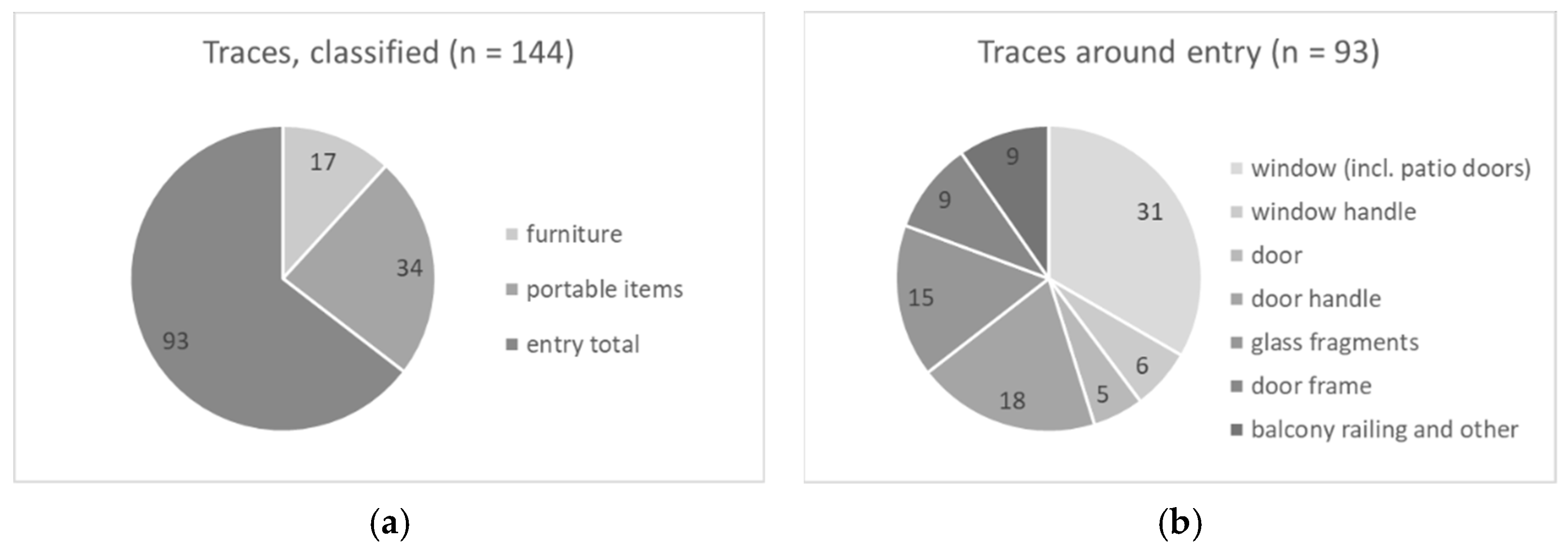
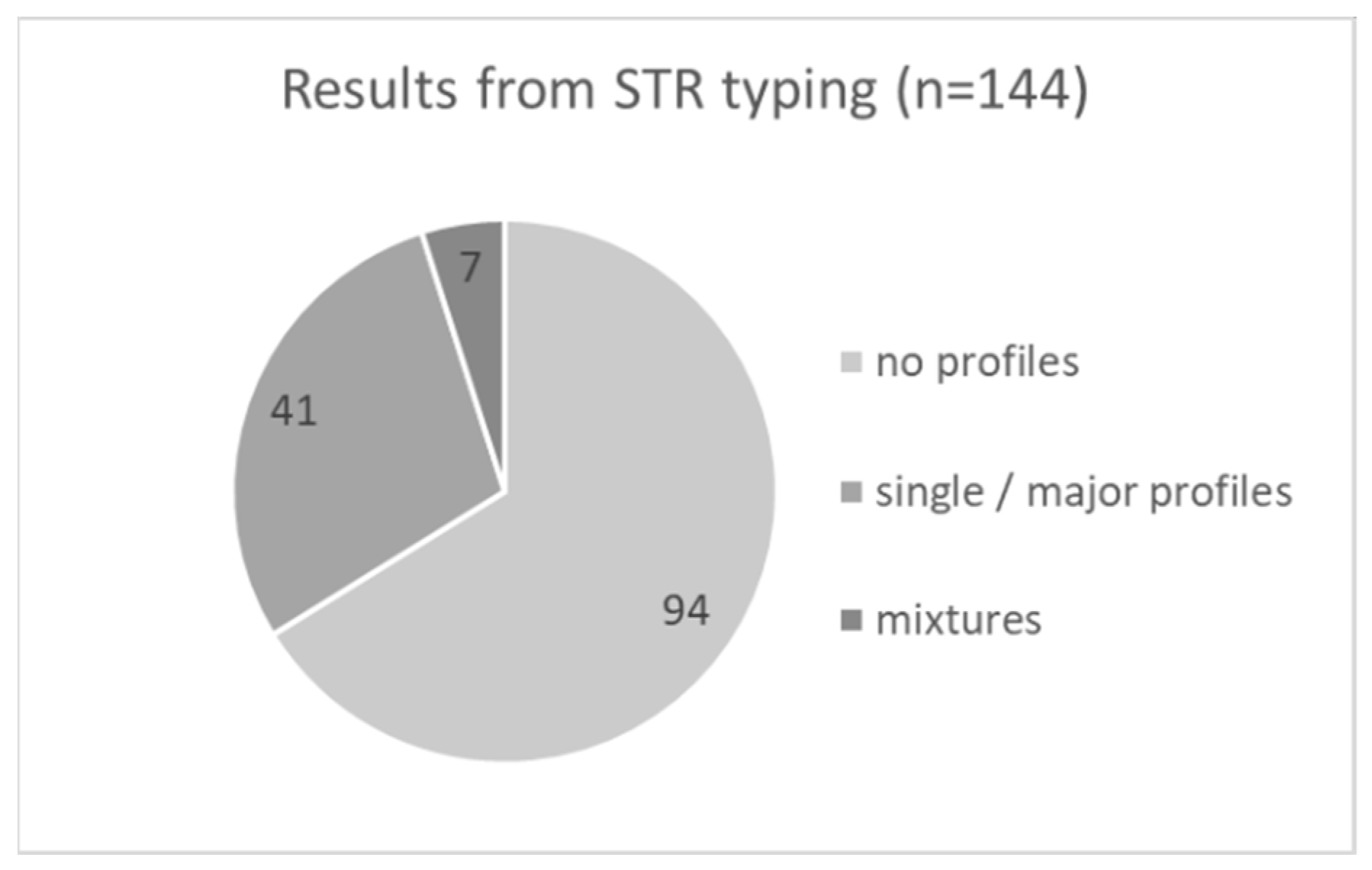
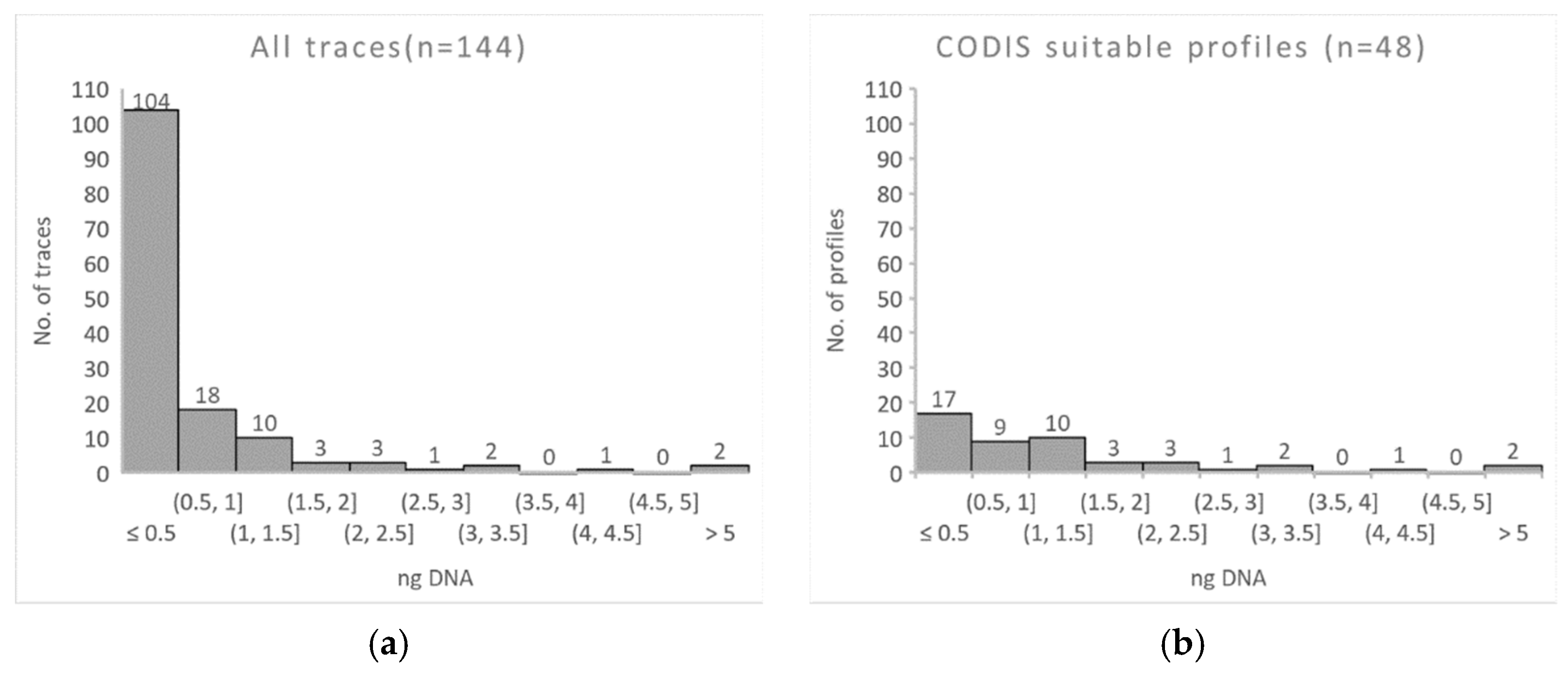
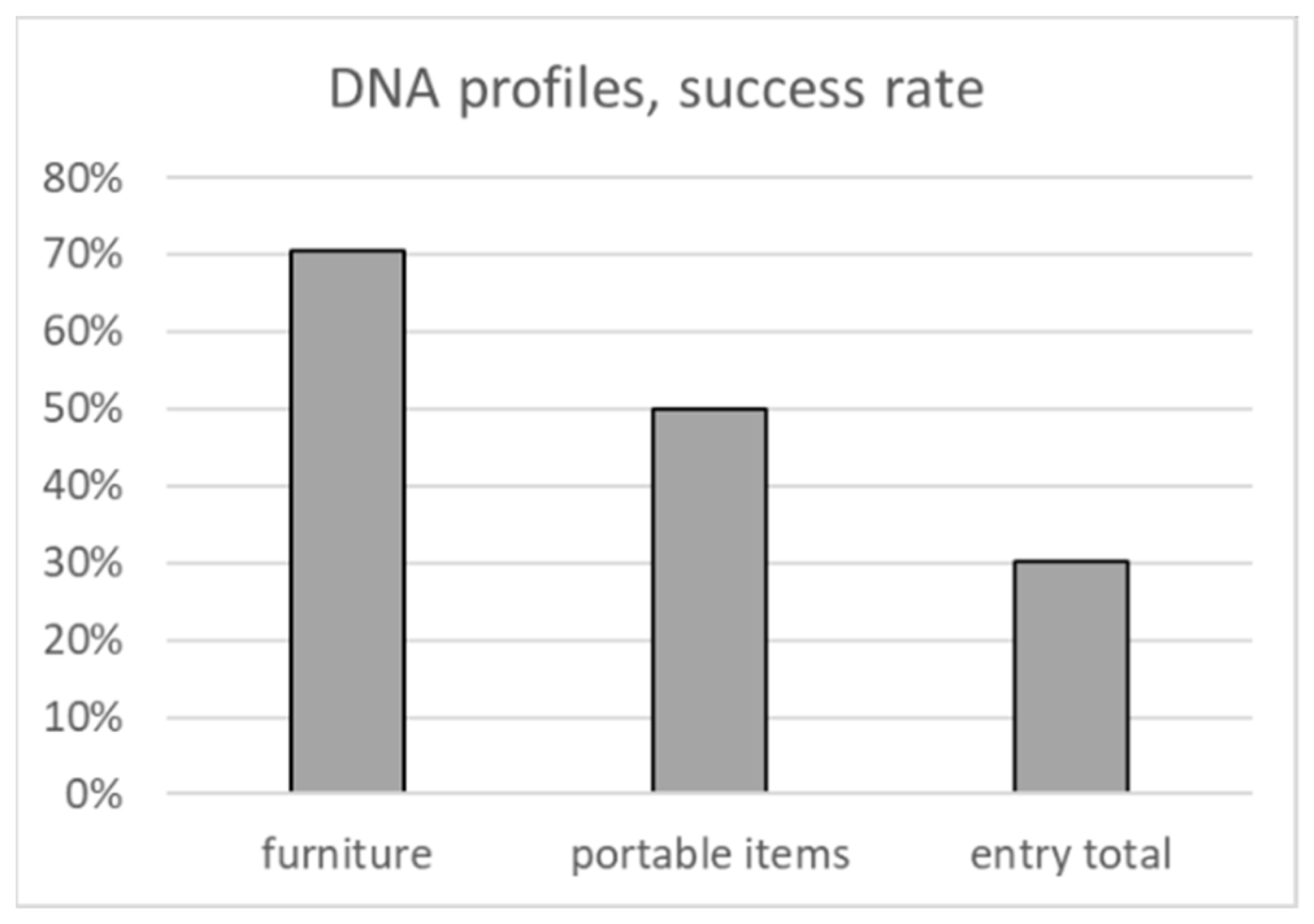
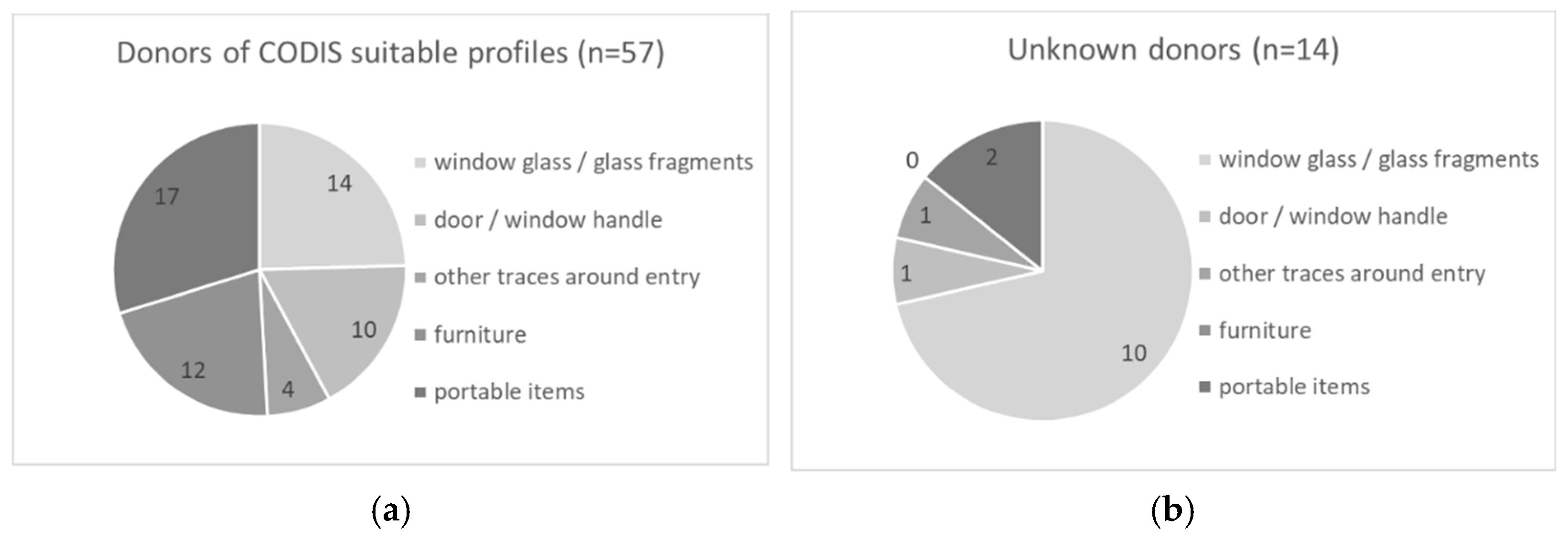
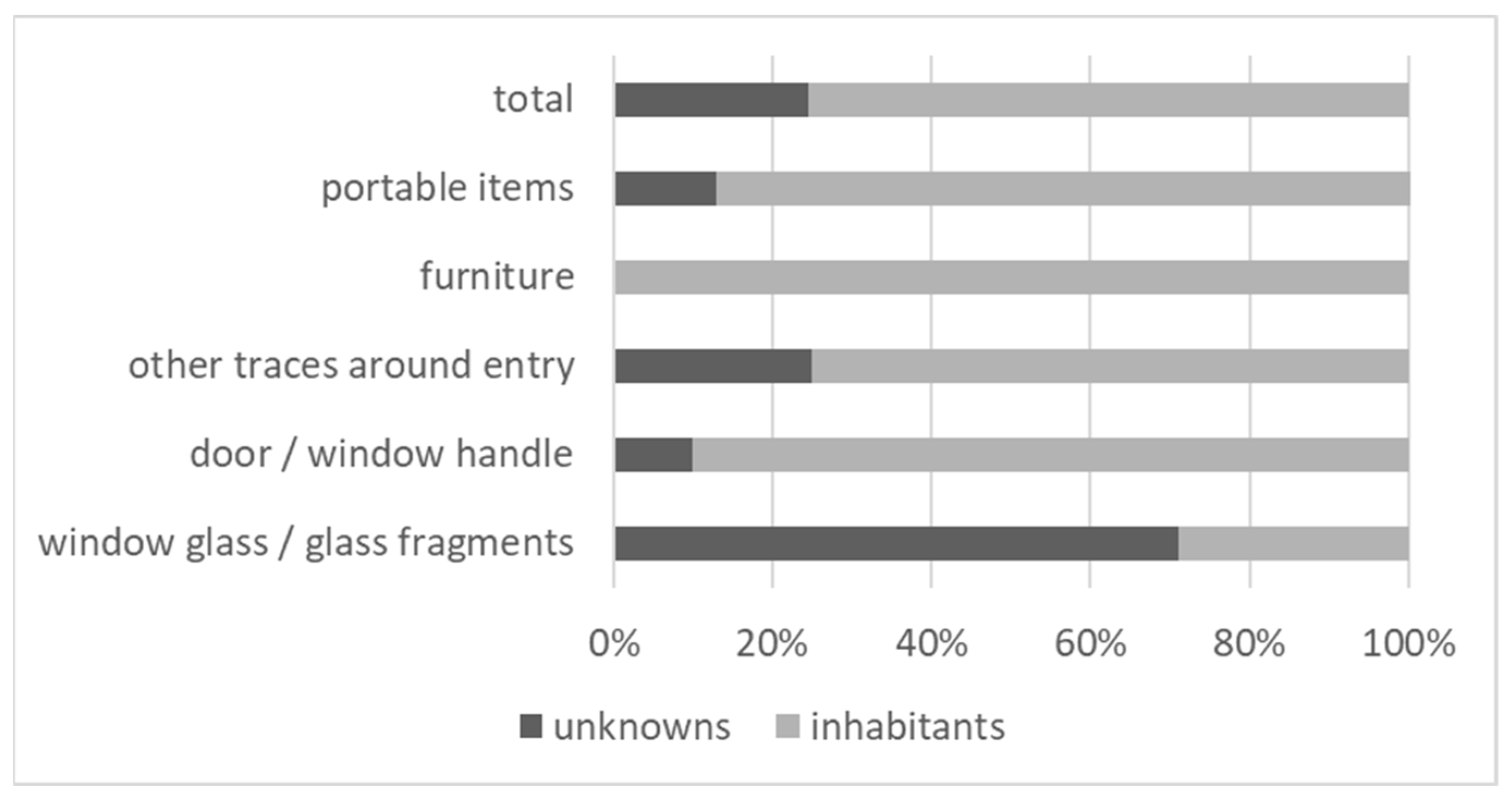
Publisher’s Note: MDPI stays neutral with regard to jurisdictional claims in published maps and institutional affiliations. |
© 2021 by the authors. Licensee MDPI, Basel, Switzerland. This article is an open access article distributed under the terms and conditions of the Creative Commons Attribution (CC BY) license (https://creativecommons.org/licenses/by/4.0/).
Share and Cite
Tièche, C.C.; Dubach, M.; Zieger, M. Efficient DNA Sampling in Burglary Investigations. Genes 2022, 13, 26. https://doi.org/10.3390/genes13010026
Tièche CC, Dubach M, Zieger M. Efficient DNA Sampling in Burglary Investigations. Genes. 2022; 13(1):26. https://doi.org/10.3390/genes13010026
Chicago/Turabian StyleTièche, Colin Charles, Markus Dubach, and Martin Zieger. 2022. "Efficient DNA Sampling in Burglary Investigations" Genes 13, no. 1: 26. https://doi.org/10.3390/genes13010026
APA StyleTièche, C. C., Dubach, M., & Zieger, M. (2022). Efficient DNA Sampling in Burglary Investigations. Genes, 13(1), 26. https://doi.org/10.3390/genes13010026





